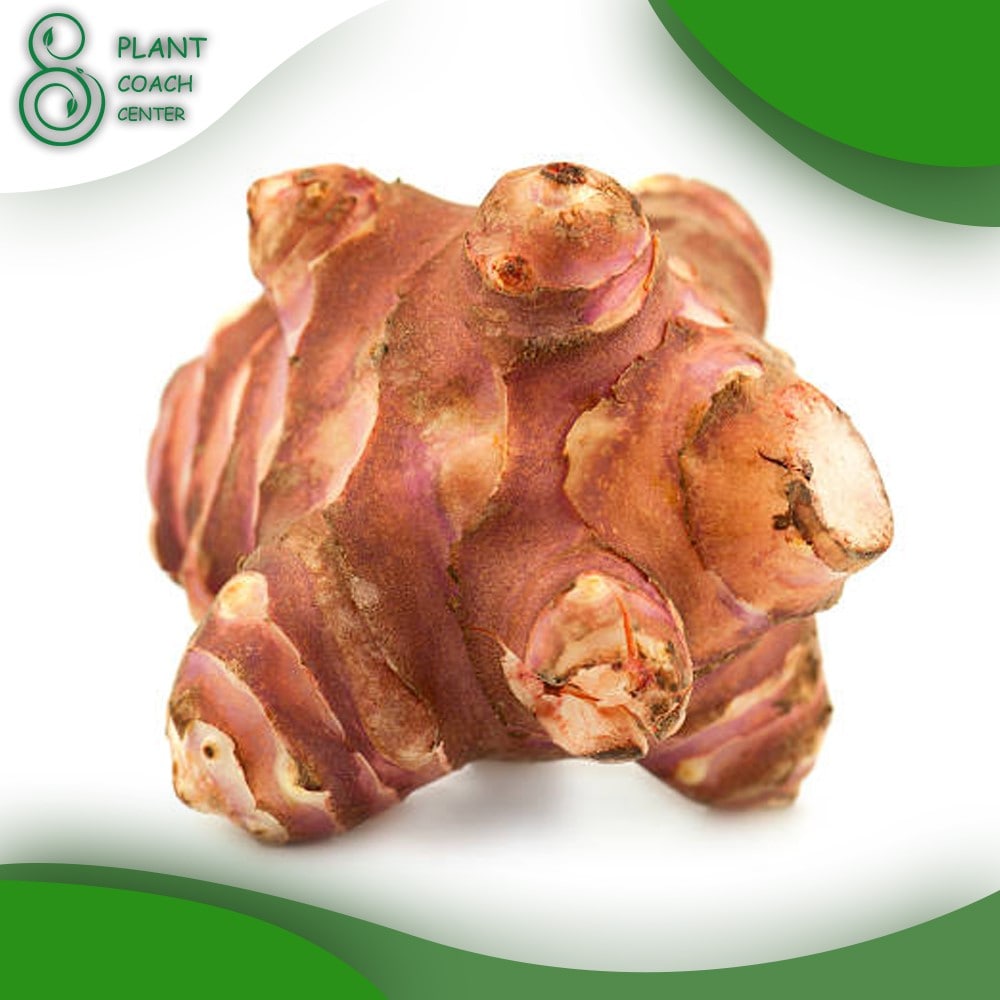When to Plant Sunchokes
Summer sunchokes, also known as Jerusalem artichokes, are versatile and nutritious tubers that can be a valuable addition to any garden. In this article, we will explore the various aspects of planting summer sunchokes, including when and how to plant them, suitable growing conditions, and essential care tips to ensure a successful harvest. Whether you’re a seasoned gardener or a beginner, this guide will provide you with valuable insights into cultivating these delightful tubers.
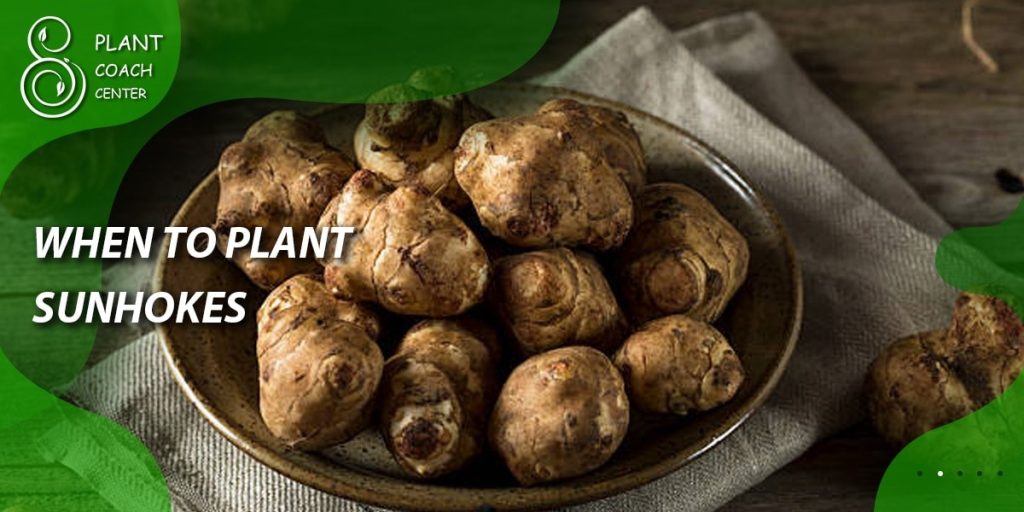
Understanding Summer Sunchokes
Characteristics of Summer Sunchokes
Summer sunchokes (Helianthus tuberosus) belong to the sunflower family and are native to North America. They are herbaceous perennials that can reach a height of 6 to 10 feet. Sunchokes produce vibrant yellow flowers resembling small sunflowers, adding beauty to your garden while providing a tasty harvest.
Varieties of Summer Sunchokes
There are several varieties of summer sunchokes to choose from, each with its unique characteristics. Some popular varieties include:
Fuseau: This variety is renowned for its high yield and smooth, elongated tubers.
Stampede: Stampede sunchokes are known for their resistance to disease and pests, making them a reliable choice for gardeners.
White Fuseau: White Fuseau sunchokes have a cream-colored skin and a slightly sweeter flavor than other varieties.
Nutritional Value of Summer Sunchokes
Summer sunchokes are not only delicious but also packed with nutrients. They are a rich source of dietary fiber, vitamin C, potassium, and iron. Incorporating sunchokes into your diet can contribute to improved digestion, enhanced immune function, and overall well-being.
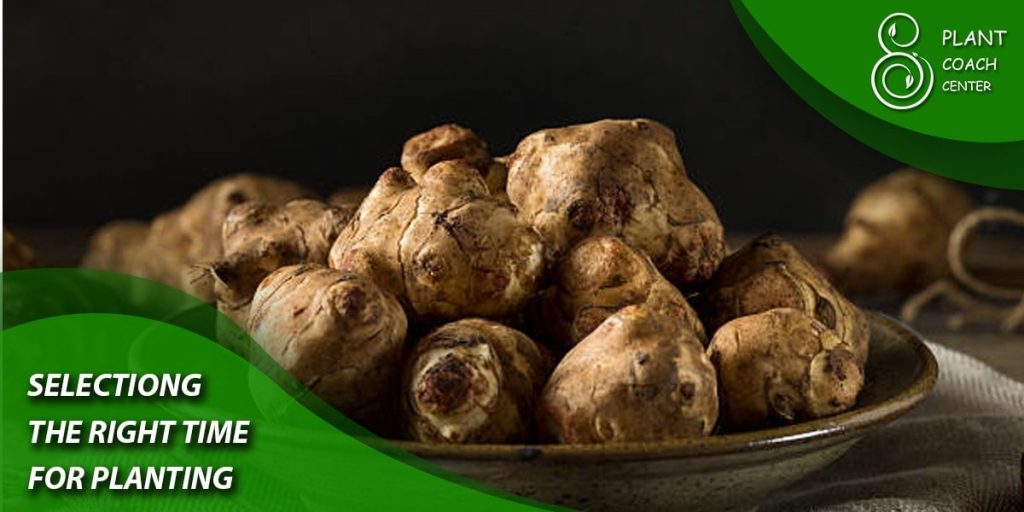
Selecting the Right Time for Planting
Climate Considerations
Ideal Temperature Range for Planting
Summer sunchokes thrive in warm weather, requiring soil temperatures between 50°F and 85°F (10°C to 29°C) for optimal growth. It is crucial to wait until the soil has warmed up before planting.
Frost Sensitivity and Timing
Sunchokes are sensitive to frost, so it’s important to plant them after the last frost date in your area. As a general guideline, wait until the soil temperature remains consistently above 50°F (10°C) before planting.
Geographic Factors
Planting Zones and Geographic Suitability
Summer sunchokes can be grown in a wide range of planting zones, typically from Zone 4 to Zone 9. However, it’s essential to consider your specific region’s climate and consult local gardening resources or experienced gardeners to determine the best time to plant in your area.
Regional Guidelines for Planting Summer Sunchokes
Different regions may have specific recommendations for planting summer sunchokes. Check with local agricultural extension offices or gardening communities to obtain accurate information regarding planting times and conditions specific to your location.
Preparing for Planting
Soil Preparation
Soil Composition and pH
Summer sunchokes thrive in well-draining soil with a pH range of 5.8 to 7. Soil testing kits are available at garden centers to determine the pH level of your soil. If necessary, amend the soil with organic matter or compost to improve its structure and fertility.
Soil Amendments and Enrichment
Before planting, enrich the soil with organic matter such as compost or well-rotted manure. This will enhance the soil’s nutrient content and moisture-retaining capacity, promoting healthy growth and development of the sunchokes.
Site Selection and Sunlight Requirements
Choosing the Right Location
Select a sunny location for planting sunchokes. They require at least six to eight hours of direct sunlight daily for optimal growth and tuber development. Avoid shaded areas or locations with competing tree roots that may hinder their growth.
Sunlight Needs for Summer Sunchokes
Adequate sunlight is crucial for the photosynthesis process, which fuels the growth of summer sunchokes. Insufficient sunlight can lead to weak and stunted plants. Ensure the chosen planting site receives ample sunlight throughout the day.
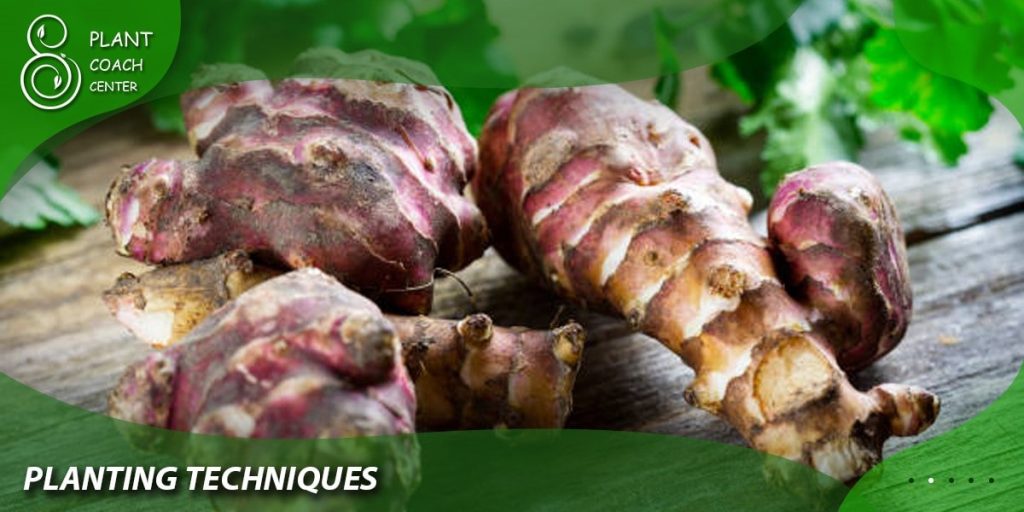
Planting Techniques
Seed Selection and Sourcing
Choosing High-Quality Seeds or Tubers
When selecting summer sunchoke seeds or tubers, opt for high-quality specimens. Look for firm tubers free from blemishes or signs of decay. If possible, select certified disease-free varieties to minimize the risk of introducing pests or diseases to your garden.
Reliable Seed Suppliers
Purchase seeds or tubers from reputable sources, such as established nurseries or garden centers. Reliable suppliers will provide detailed information about the variety, planting guidelines, and any specific considerations for successful cultivation.
Seed Treatment and Preparing Tubers
Proper Seed Treatment Methods
Some gardeners recommend soaking sunchokes in water for a few hours before planting to promote germination. However, this step is not mandatory. If you choose to soak the tubers, use room temperature water and allow them to dry slightly before planting.
Preparing Tubers for Planting
If the tubers are large, you can cut them into smaller pieces, ensuring each piece has at least one “eye” or bud. This will increase the number of plants you can grow. Allow the cut surfaces to dry for a day or two before planting to minimize the risk of rot.
Planting Methods
Direct Seeding
Sunchokes can be directly sown into the garden bed. Dig holes or furrows about 2 to 3 inches deep and place the tubers with the eyes facing upward. Space the tubers approximately 12 to 18 inches apart, allowing enough room for their vigorous growth.
Transplanting Techniques
Alternatively, you can start sunchokes indoors in pots or trays and transplant them once the risk of frost has passed. This method provides an earlier start and allows you to protect young plants from adverse weather conditions.
Care and Maintenance
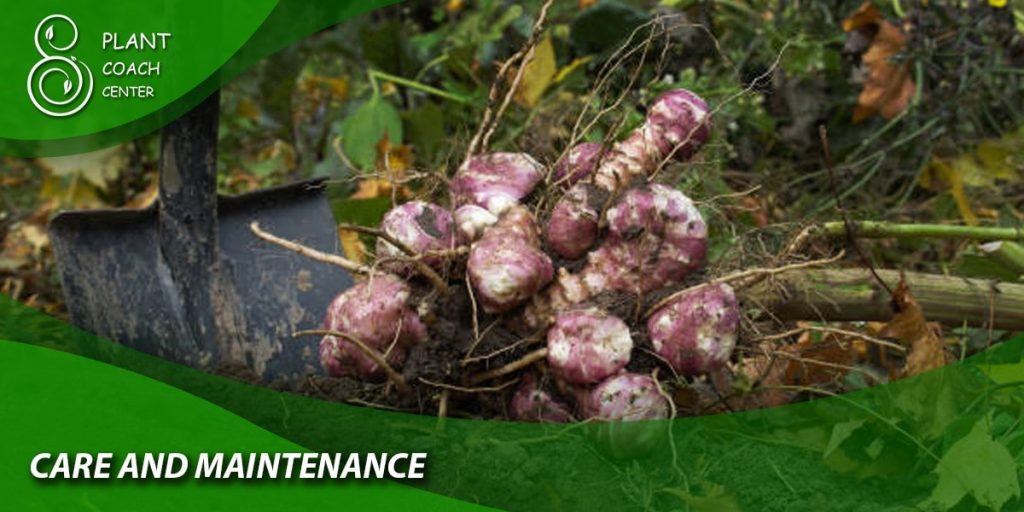
Watering and Irrigation
Watering Requirements for Summer Sunchokes
Sunchokes require regular watering, especially during dry spells. Aim to keep the soil consistently moist but not waterlogged. Provide deep, thorough watering sessions rather than frequent shallow watering.
Efficient Irrigation Techniques
Consider using drip irrigation or soaker hoses to deliver water directly to the root zone while minimizing water loss through evaporation. Applying a layer of organic mulch around the plants can also help retain soil moisture.
Fertilization
Nutrient Needs of Summer Sunchokes
Sunchokes are relatively low-maintenance plants but can benefit from balanced fertilization. Apply a slow-release organic fertilizer or compost around the base of the plants during the growing season. Avoid excessive nitrogen fertilization, as this can lead to excessive foliage growth at the expense of tuber development.
Organic and Synthetic Fertilizer Options
Organic options, such as compost, well-rotted manure, or fish emulsion, provide slow-release nutrients and improve soil fertility over time. If using synthetic fertilizers, follow the manufacturer’s instructions and avoid over-application to prevent nutrient imbalances.
Weed Control
Strategies for Managing Weeds
Regular weeding is essential to prevent weeds from competing with sunchokes for nutrients, water, and sunlight. Use hand tools or shallow cultivation to remove weeds carefully, taking care not to disturb the shallow root system of the sunchokes.
Mulching and Weed Prevention
Applying a layer of organic mulch, such as straw or wood chips, around the plants can help suppress weed growth and conserve soil moisture. Ensure the mulch is not in direct contact with the stems to prevent rot.
Pest and Disease Management
Common Pests Affecting Summer Sunchokes
Sunchokes are relatively resistant to pests. However, keep an eye out for potential issues such as aphids, slugs, or snails. Handpicking or using organic pest control methods can help manage these pests effectively.
Prevention and Treatment of Diseases
Sunchokes are generally resilient to diseases. However, they can occasionally be affected by fungal diseases like powdery mildew or bacterial infections. To minimize the risk, provide adequate air circulation around the plants, avoid overhead watering, and promptly remove any infected plant parts.
Care and Maintenance
Harvesting and Storage
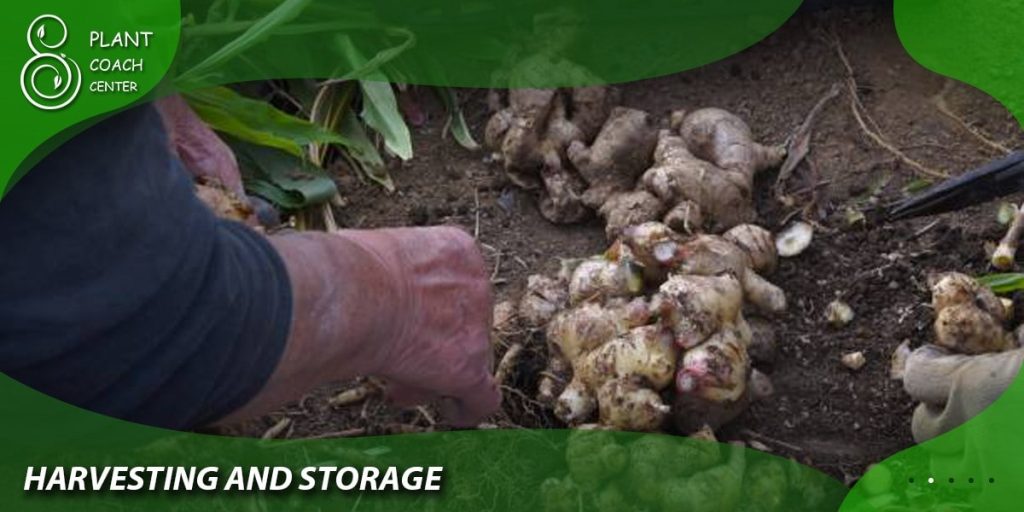
Signs of Maturity
Determining When Sunchokes are Ready for Harvest
Sunchokes are ready for harvest when the foliage begins to turn yellow and die back in the late summer or early fall. Gently dig around the base of the plant to check the size and maturity of the tubers.
Visual and Tactile Indicators
Mature tubers will have a firm texture and a thin, papery skin. They should be easy to separate from the soil and have a desirable size for consumption.
Harvesting Techniques
Proper Digging and Harvesting Methods
Use a garden fork or shovel to carefully loosen the soil around the base of the plant. Lift the tubers gently, taking care not to damage them. Remove any excess soil and trim the stems, leaving about an inch above the tubers.
Harvesting Equipment and Tools
Depending on the size of your harvest, you may need a bucket, garden cart, or harvest bag to collect the tubers. Clean and sterilize your equipment before use to prevent the spread of diseases.
Post-Harvest Handling
Cleaning and Curing Sunchokes
After harvesting, gently brush off any excess soil from the tubers. Avoid washing them, as moisture can promote rot. Allow the tubers to cure in a cool, dry, and well-ventilated area for a few days. This helps to toughen the skin and improve their flavor.
Sorting and Selecting Tubers
Sort through the harvested tubers, discarding any damaged, diseased, or undersized ones. Select the healthiest and largest tubers for storage or immediate consumption.
Storage Methods
Short-Term Storage
For short-term storage, place the cured sunchokes in a breathable container such as a mesh bag or a shallow tray lined with newspaper. Store them in a cool, dry, and dark location with good airflow, such as a basement or root cellar. Check them periodically for signs of decay and use them promptly.
Long-Term Storage
If you want to store sunchokes for an extended period, consider a cold storage method. Pack the cured tubers in slightly damp sand, peat moss, or sawdust, ensuring they are not touching each other. Place them in a container or airtight plastic bag with ventilation holes and store them in a refrigerator or a cool, dark, and well-ventilated space.
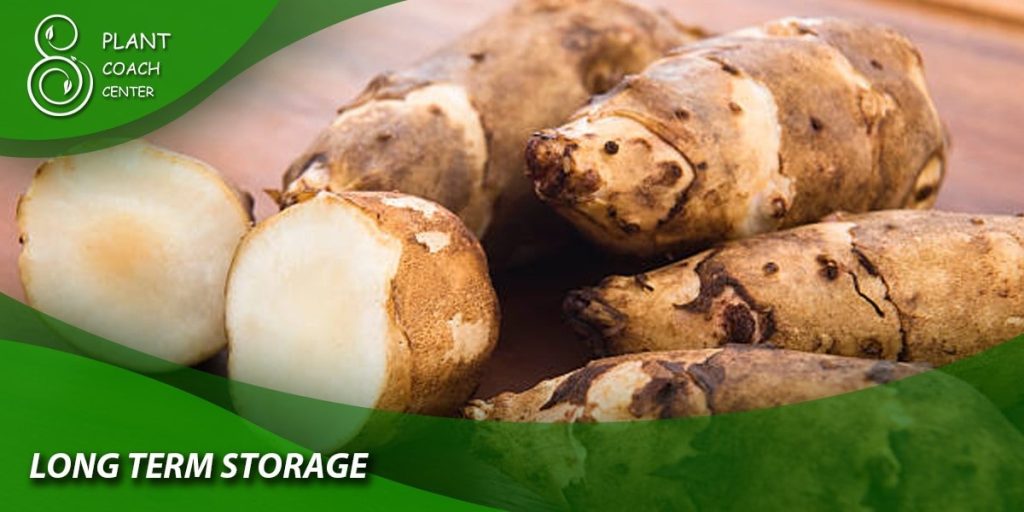
Conclusion
Growing summer sunchokes can be a rewarding experience, providing you with a bountiful harvest of nutritious and delicious tubers. By understanding the optimal planting times, suitable growing conditions, and proper care techniques, you can cultivate healthy sunchokes in your garden.
Remember to choose high-quality seeds or tubers, prepare the soil adequately, and provide the necessary water, nutrients, and sunlight. With a little patience and attention, you’ll soon be enjoying the flavorsome rewards of your summer sunchoke harvest.
Remember to visit PlantCoachCenter.com for more information and resources on plant coaching and gardening tips.


